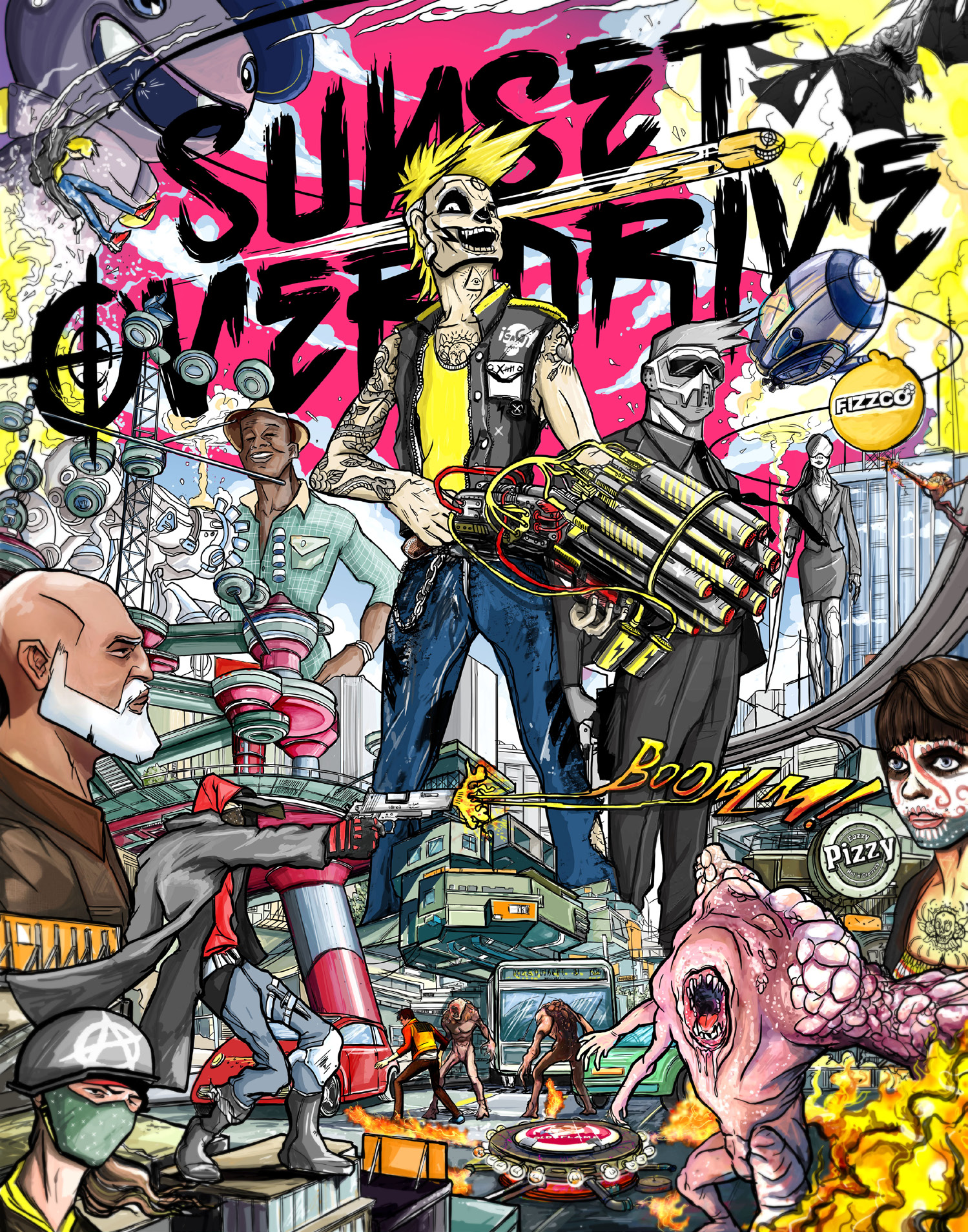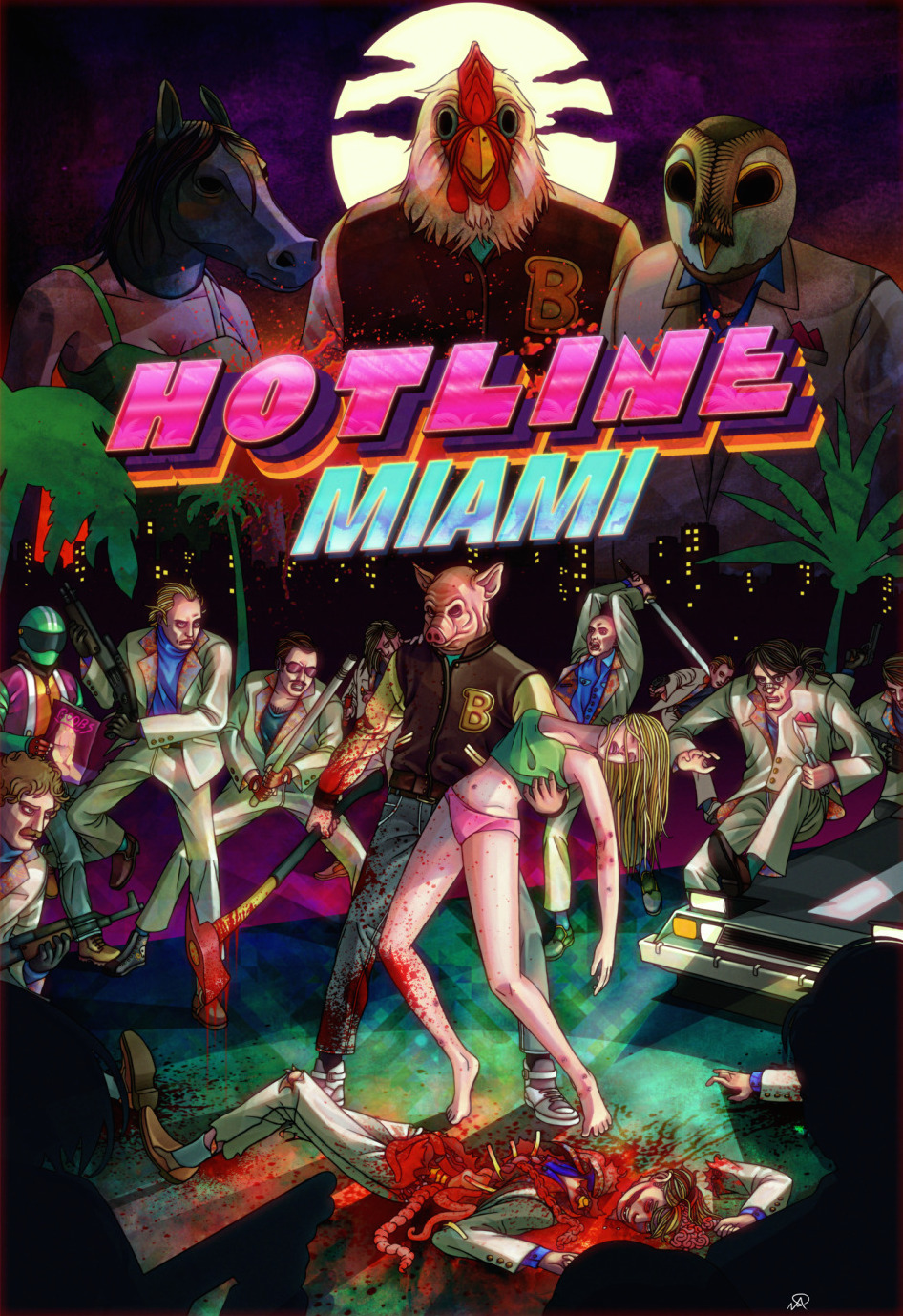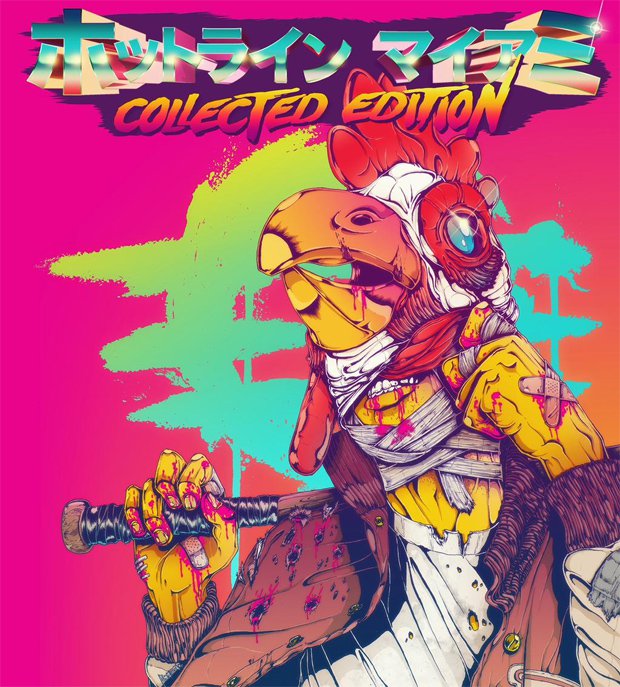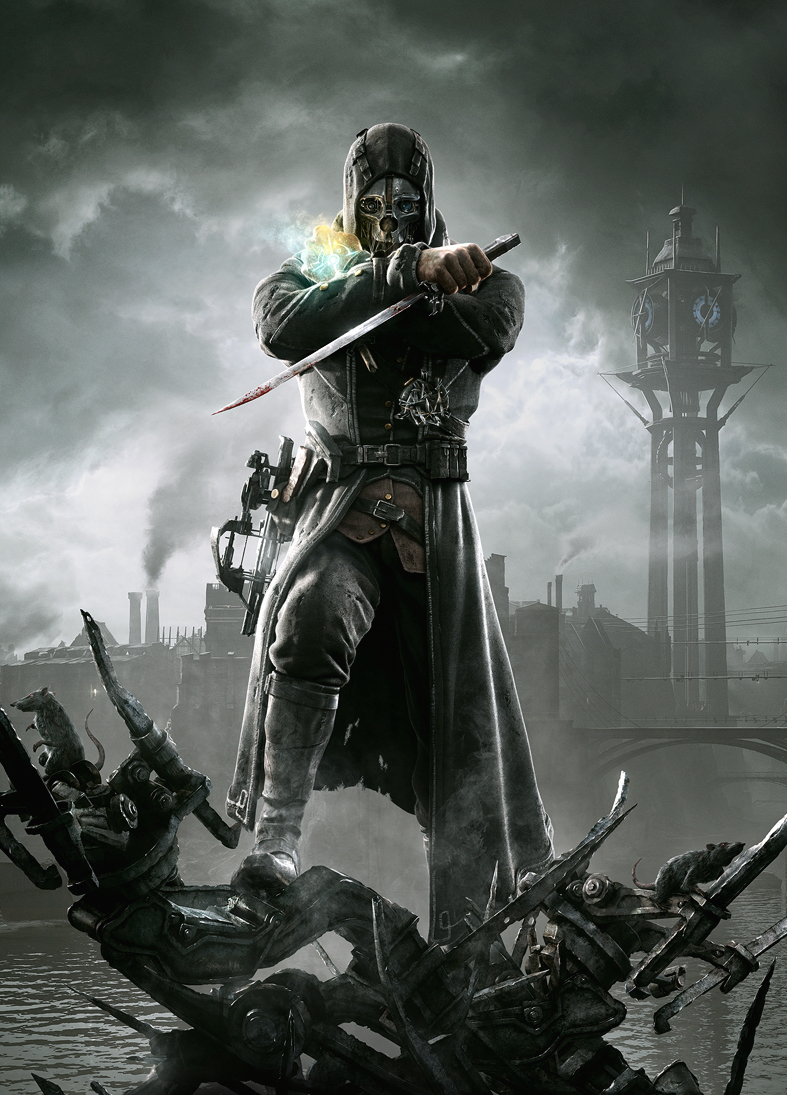Why Did Video Game Companies Create New American Box Art?
A customer will face over 100 different games when walking into a GameStop. There are more than 3,700 games currently on Steam and more than 6,200 on the PlayStation Network.
And backside each of these is a team wanting its game to stand up out. Often, that means spending tens, if not hundreds, of hours perfecting the first thing many players encounter: the game's box art.
Using iv recognizable covers as examples, we recently tracked down artists, developers and publisher representatives to explicate why individual covers await the mode they do, how they come together and what dissimilar shapes they take before finally reaching customers.
Sunset Overdrive: From conceptualization to realization
When Insomniac Games works with an external studio to create box fine art, it makes a list of adjectives to draw the game. Blueprint studio ilovedust found "intensity" and "fun in the terminate times" on the listing for Sunset Overdrive, Insomniac's 2014 Xbox sectional.
Asked how to make embrace art unique, Insomniac Creative Director Marcus Smith says there are 2 main factors the programmer considers. "In that location are rows and rows of games at every shop," Smith explains, "so ideally your cover stands out against the ocean of characters standing in a mid shot looking solemn." The other important gene in creating cover fine art, he says, is selling the audience on a fantasy they tin buy into.
Ilovedust creates cover art that is right in line with Sunset Overdrive's over-the-summit pattern. Everything jumps off the folio, from the onomatopoeia firing from the Scab'southward gun, to the principal character brandishing 1 of the game's insane weapons in the viewer's face.

"It was clear from the beginning that [ilovedust] understood the spirit of the game," Smith says. One of Microsoft's art directors recommended the studio. Though Insomniac had heard "safer" pitches from artists information technology knew, the squad was impressed with the quality of ideas ilovedust offered. Based in Portsmouth, England, ilovedust'due south client list includes Nike and UPS.
"We were the guys that took the chance and flew all the way from England [to Insomniac's HQ in Burbank, California] to present our concepts in person," says Ollie Munden, pb designer at ilovedust.
 Before settling on a terminal design, ilovedust experimented with various approaches like this one seen hither.
Before settling on a terminal design, ilovedust experimented with various approaches like this one seen hither.
The procedure began with Insomniac, Microsoft and ilovedust speaking about private ideas for Sunset's cover. Insomniac wanted fine art that looked "kinetic," Smith says, and that showcased story elements.
Early drafts featured a "cutting and paste" style, a direction present in early promotional textile for the game'southward 2013 announcement. This style was supposed to allude to the mass marketing used by in-game corporation and antagonist, Fizzco. Similar to adding a picture'southward enemy alongside the hero on a pic poster. But Insomniac wanted a comprehend that was more literal, so ilovedust changed the style to better reflect what a player could expect from gameplay.
The cover needed to convey that this new game was "clearly a very fun, dynamic and vibrant globe," says ilovedust illustrator Chris Clancy. "The cover is packed out to evidence the many different aspects of the game and to be as informal as possible."
Sunset's cover came in iii iterations, "followed by a mind-numbingly large number of smaller tweaks," Smith says. The first iteration sent ilovedust in several different design directions.
"They had things that were simple and iconic; they had graphic blueprint treatments; they had covers that focused on the world more and covers that focused more on individual characters," Smith says.
"We went through endless rounds of early on sketches."
"We went through endless rounds of early sketches," Munden says, admitting that, ironically, one of the primeval versions was very similar to the final comprehend.
The 2d iteration saw the two talking nearly the dissimilar directions and figuring out what worked. From there, Insomniac was able to explain to ilovedust what needed to be changed, allowing them to return with directions "that were more than defined."
"Oftentimes times these things come down to comments like, 'we dear the character's action from option B,'" Smith says, "'only the expression from pick A, and the environment from option C, but make it all expect more 'vibrant'" — this is the kind of management that makes artists hate u.s.," he jokes.
One of the main areas of alteration was the featured character. Smith explains it was hard to find a proper manner in a game that allows players to look still they want.
 Some other discarded design
Some other discarded design
"His look is actually something we feel we had some input into, which is neat," Munden says. "Insomniac [was] really open to our suggestions on how he should expect."
Smith admits that at that place was a bespeak when Insomniac became too protective of what information technology felt was right for the cover, when information technology didn't allow ilovedust plenty creative freedom. But ilovedust presented the developer with such not bad work, he says, the artists were able to proceeds Insomniac'due south trust.
"That was a good lesson. Give your artistic partners the room to bring their betoken of view to the table," Smith says, explaining that the encompass was fabricated amend when Insomniac immune ilovedust more influence.
The embrace exists at present as Insomniac wanted. It'southward kinetic, like a moment suspended in time. The cover'south intricate details are intriguing and invite players to be curious in Sunset's chaotic world.
"It all worked out in the end," Clancy says, "even with half-shaved Mohawk hero hair."
Hotline Miami: Kitschy, messy and honest
5-thousand and 4-hundred-lx-two miles away from Insomniac in Burbank sits Gothenburg, Sweden, dwelling house of Dennaton Games and its 2012 release, Hotline Miami. The game is a violent feel that begins simply by looking at the encompass art by painter and Gothenburg resident Niklas Åkerblad.
Awash with brilliant colors, the game'south masked protagonist, Jacket, stands on the cover with an axe in one manus, a blood-splattered woman in the other, surrounded by adjust-clad enemies. Palm trees decorate the altitude and the viscera of a recently-deceased adversary litters the footing below. Presumably, the comprehend shows the moments before the remaining foes meet a similar fate — the moments earlier Jacket presses X to retry.
 Hotline Miami'south original cover art
Hotline Miami'south original cover art
Dorsum when the game was in development, Åkerblad let his friends, Jonatan Söderström and Dennis Wedin, both Dennaton developers, piece of work in his apartment. When the team started thinking about cover art, it originally looked to artists who had worked on B-grade horror films from the '70s. When it couldn't find one they agreed upon, Åkerblad was there and offered to practice the art himself.
"They didn't know what they wanted, and so I tried to feel them out," Åkerblad says. After finding a draft that Dennaton was happy with, the cover took him about 3 days to do, painting digitally.
Hotline Miami juxtaposes vibrance with violence, coming at players with blinding colors, gratuitous gore and an electronic soundtrack with depression-end yous can feel in your breast. Åkerblad worked to create his own version of Dennaton's world and found it like shooting fish in a barrel to translate these themes by going off of what was present in the code.
"Yous're not painting the game — y'all're interpreting the [game'south] fashion in your own style," Åkerblad says.
"The game is vehement and the game is very similar, 80s kitschy," he explains. "It's obvious, and then you just go for these things." He cites Silent Hill as an influence, teaching him he could create something that is simultaneously beautiful and troubling.
 For the game's Japanese release, Dennaton took a unlike approach.
For the game's Japanese release, Dennaton took a unlike approach.
The neon colors, white blazers and even how Jacket holds the woman are all ways Åkerblad tried to capture Hotline Miami's 80s setting. And the corpse at the bottom? He believes the more extreme, the improve.
"Instead of having simply a body that's a footling bit hurt in front of him, you totally fucking shred it," Åkerblad says.
"When you show violence, you got to make it what it really is, not just an [entertainment] factor," he explains. "I think that it's actually time to intellectualize violence." Åkerblad believes that information technology is necessary to be honest with its nature, saying it'south "soggy and messy and disturbing."
When creating embrace art, Åkerblad believes it's acceptable to take liberties with a piece, as long equally it maintains the essence of the game. It's almost as if the artist is creating a portrait for the championship. He believes that giving the fine art honesty is more important than trying to "dispense" what is going on in a consumer'southward heed.
Speaking to Åkerblad, it'due south articulate he'south a cerebral person. He put a lot of idea into his comprehend for Hotline Miami and the message information technology carries. He captures the game'southward mood and also sets the tone for a game that makes players recall about violence past presenting them with nothing but.
Octodad: What goes where
When Octodad: Dadliest Catch stumbled onto digital storefronts in January of 2014, it told the story of an unlikely protagonist: an octopus trying to maintain his disguise as a homo existence and live a normal man's life. Chris Stallman, art lead for developer Immature Horses, recently walked through his procedure of designing Octodad's cover art for Polygon:
 Young Horses started its pattern with this family unit group shot.
Young Horses started its pattern with this family unit group shot.
"The proper name Octodad lonely wasn't enough to tell anyone what the game is about. Is it an octopus family man with octopus children? Does he have eight kids? Are there 8 dads? By having Octodad with his family unit it communicates that this octopus man in a suit has a human family unit and, at to the lowest degree on the surface, they are happy.
"I knew that I wanted to include the entire family in the motion picture because Octodad's master focus as a character is living an idyllic life with his family. Something that looked like a family portrait, I felt, was a practiced fashion to communicate that. So I started by posing out the game assets in a staged family unit photo, took a screenshot, and put it into a document that was the right dimensions for box art.
"I and then brought in the Octodad logo and started to motion it and the family unit around to notice a layout that felt squeamish. Putting the logo in the center was working well.
 Out of frame here, Tommy'due south anxiety aren't touching the ground.
Out of frame here, Tommy'due south anxiety aren't touching the ground.
"Tommy started to experience afar and cutting off from the family unit and the logo placement was merely helping this. And then I decided to cheat a little and move him up higher. He is actually floating off the footing, only it is cropped such that it isn't noticeable.
"The logo was and so placed above the family unit so as not to encompass Tommy's face up. I as well added a guide for the placement of the branding bar and the game rating then I could figure out final placement of the family and the logo.
"We could proceed to a simple backdrop, similar i constitute in a portrait studio, or we could place the family somewhere at home. A elementary backdrop is boring so I looked around the house until I plant a place that made sense to me, and that became the corner of the backyard.
"The tree could be used to frame the family, and the background was uncomplicated enough without likewise much competing detail to draw the heart abroad from the family unit. So I captured an paradigm that was large plenty that it could also exist used in a horizontal imprint and dropped it in.
 The concluding Octodad box art
The concluding Octodad box art
"To finish the paradigm, I resized the background so that the tree and birdhouse would meliorate frame the family. I besides wanted to go on Stacy'due south hair from overlapping the tree trunk then that her silhouette would read and not get lost. The Octodad logo was moved up a bit because I didn't similar it barely sitting on Octodad'due south caput. Finally, I added the Young Horses' logo in the bottom correct corner to finish the image.
"Then it was just a thing or reusing the logo, family and groundwork to create images in the correct dimensions for the unlike storefronts.
"Unfortunately, there were some layouts that had me get back on some of the choices I fabricated. Stacy's hair had to overlay the tree torso in a few of the banners, and the logo is sitting directly on Octodad's head in the square one. But overall, I call back things worked out pretty well."
Dishonored: "The total convergence of art and marketing science"
Scanning over a group of game covers, it's easy to notice familiar trends. Bold men stand at the forefront, often with a weapon in their hands, coming toward the viewer mid-set on. Information technology's easy to run across this all as formulaic, unless you're Charles Bae, in which case you know that this is a system that's proven to work.
Co-founder and chief creative officeholder at the New York-based design company Rokkan, Bae has designed cover art for games such as Dishonored and The Evil Within, likewise as washed work for companies similar American Express.
"No matter how many people say 'information technology's formulaic' and 'expect, here's another hero pose' ... it's proven it works."
"[Cover] art is the total convergence of art and marketing science," Bae says. He explained information technology is a developer who brings the artistic view for a cover and a publisher who brings the marketing view — two perspectives that often clash. The chore of an agency like Rokkan is to take the disparate ideas and mediate them down into one piece "that speaks to the stiff key points everyone wants to communicate."
Originally, Rokkan was approached past publisher Bethesda to work on Dishonored's digital marketing campaigns, and the design of the game's cover art was given to a separate company. The other studio did near 60 sketches for the encompass, none of which Bethesda and the developer, Arkane, were happy with. Reaching a breaking bespeak, Bethesda asked if anyone at Rokkan had gaming experience. Being every bit Bae was the only one with a gaming background — he had formerly worked at the now-defunct developer Acclamation — he decided he would take on the projection.
 Dishonored's final box fine art takes a zoomed-in arroyo.
Dishonored's final box fine art takes a zoomed-in arroyo.
"Luckily, in this scenario, considering a previous bureau had washed so many mock-ups — and no one really liked any of them — we had a fortunate situation where we didn't take to do that many sketches," Bae says. Knowing what Bethesda didn't want, he was able to go in a new direction.
When conceptualizing a game's embrace, he explains that each publisher and developer is different in their requests. Working on this item project, Bae did high-contrast, black-and-white sketches using either pencil or pigment. The Montreal-based company Meduzarts handled all the high-resolution terminal artwork.
Rokkan had its hands on everything from the game'southward cover fine art and logo to the DLC fundamental art. Bae was besides the creative director on the game's official website and "The Tales From Dunwall" animated shorts.
When asked about any key features that make cover fine art stand out, Bae explained that people who harp on things looking besides similar from box to box are a minority.
"I call up that there's this misconception when a consumer — or gamer — looks at a piece of key fine art ... they say 'Well, that doesn't look hard to practise.'"
"Information technology is effective," Bae says. "And no thing how many people say 'it'south formulaic' and 'wait, hither's another hero pose' ... information technology'south proven it works. Gaming key fine art — and key art in general — stems from advertising," he goes on, citing movie posters as the closest parent to game cover fine art.
Bae's point is emphasized by BioShock Space. When Irrational Games revealed the cover for Space in 2012, it was criticized for being generic, defective the game'southward complicated themes. Information technology exclusively features the game's protagonist, Booker DeWitt with a shotgun thrown over his shoulder. Looking at the cover alone, one may call back that it's just a standard shooter. Just, is that the indicate?
Speaking to Wired, Infinite'due south artistic manager and Irrational co-founder, Ken Levine explained that, outside of defended gamers, non many people had heard of the BioShock serial. The cover was designed to concenter the casual gamer, not "people who read IGN." Equally of June 2015, BioShock Infinite had sold effectually 11 million copies.
 A zoomed-out look at the art featured on the Dishonored box
A zoomed-out look at the art featured on the Dishonored box
"I think that there'due south this misconception when a consumer — or gamer — looks at a piece of key art or box front and they say 'Well, that doesn't look hard to practice,'" Bae says. "'That's just a dude standing in the middle, really nicely silhouetted, and it'south just a hero pose.'" But getting a cover to that bespeak takes an extremely long time, during which every item is scrutinized by developers and publishers — and Bae believes that is the style it should be.
When Bae was working on the encompass for Dishonored, he had about five different options for what main grapheme Corvo would be shown continuing on earlier settling on the dismantled Tallboy; a item that is cropped out of the retail cover for the game.
Bae explains that a lot of the features that get so prevalent in covers are influenced by current trends.
"The industry defines itself," he says, explaining it's possible to draw parallels betwixt things such as poses, color schemes, etc. A popular game's encompass may go the zeitgeist for how cover fine art will look that year.
Final drafts
All of these artists — Bae, Åkerblad, Stallman and ilovedust — create pieces that are unique in their own ways. But in that location are also countless edits put in past developers and publishers who want to make sure their game is going to entreatment to as many players equally possible.
"It'due south a cliché to imagine all of us sitting in a room arguing over the color of the shirt on the guy on the box — a cliché with some basis in fact," says Joe Maris, blueprint director at Microsoft. He explains that this detailing is refining the vision of a game just equally much as presenting it.
When and so much of a game tin can be online before reaching retail shelves or digital storefronts, companies such as Microsoft believe it is as of import as ever to present a game in as poignant of a way as possible. According to Margis, everything created for a game, whether information technology'southward a level in the game or its merchandising, is "simultaneously clarifying and reinforcing the essential spirit of [the] game."
This theory as well carries over to other regions of the world where box art may be altered to appeal to the interests of international players. Covers may exist outsourced in an endeavour to "use artists who understand the sensibilities of that region across superficial stereotypes," Margis explains.
A lot lies behind video game cover art. Numerous hands touch a piece, making certain what is captured on the folio will effectively sell a game and its world. And these covers often become the first statement on what a developer has created.
0 Response to "Why Did Video Game Companies Create New American Box Art?"
Post a Comment